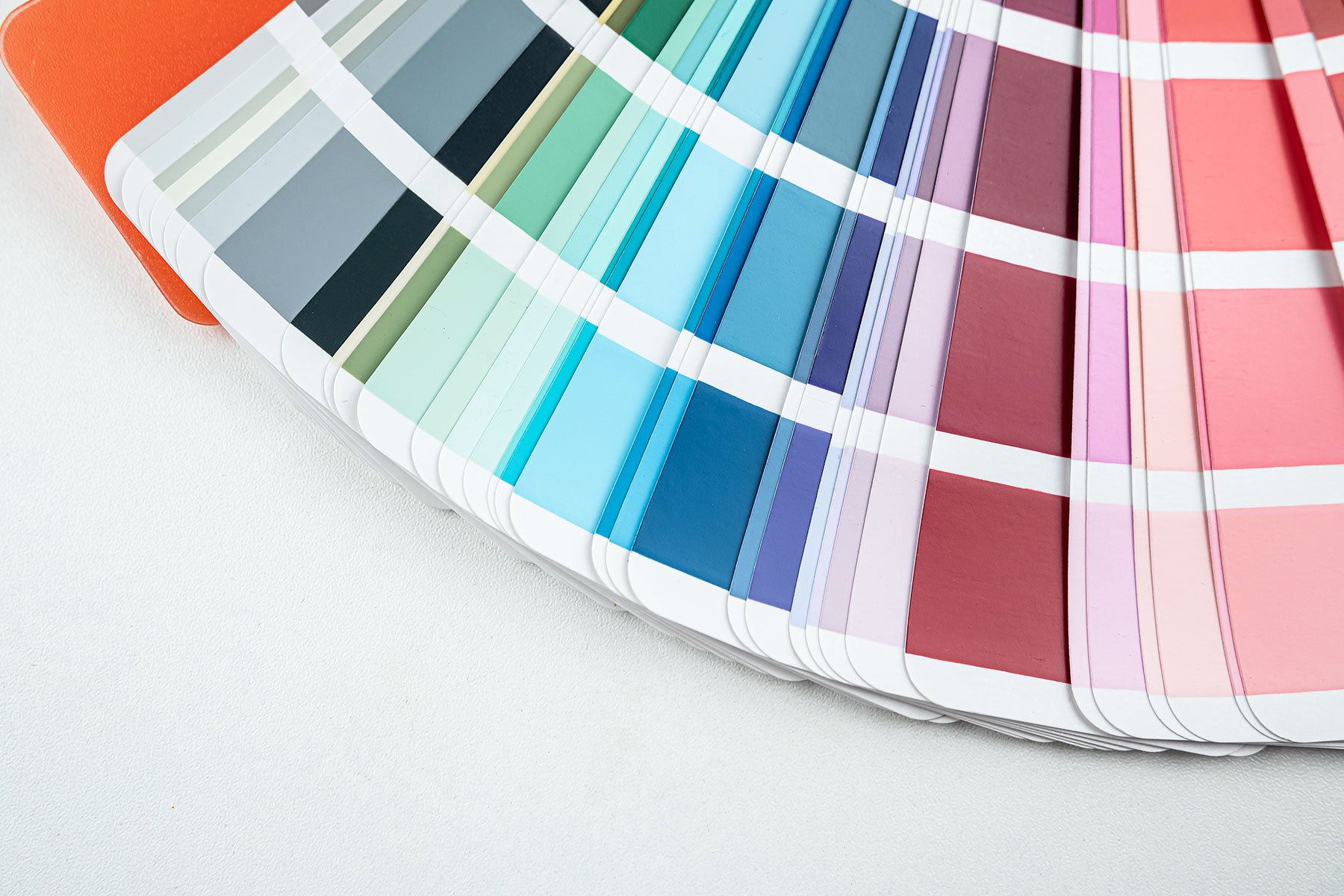October 15, 2024 | Paint Colors
The secret tool for picking home paint colors: the color wheel
Home is where the heart is, and nothing sets the tone of your living space quite like the colors you choose for your walls.
Selecting the perfect paint colors can be a challenge. It’s often difficult to visualize how a paint color will look on the wall, especially since it can appear so different in person compared to photos.
The color wheel offers a reliable method for determining whether colors compliment each other, making it easier to narrow down the rainbow to a few key shades. These principles of the color wheel are used by artists and interior designers alike.
Color wheel complementary colors
To find colors that work well together, look at shades directly opposite each other on the color wheel. These shades have the highest contrast, which is typically what makes a wall color pop.
Unlike most blogs on this topic, we're not going to suggest you paint your house green and red or blue and orange. Instead, think of it this way:
Start by selecting something you love for the room, like a piece of art, throw pillows, or furniture. Identify the primary tones in that item, then find that color on the color wheel and pair it with its opposite, high-contrast color.
From the color wheel to the paint deck

Once you’ve found a color on the color wheel that interests you, the next step is to locate it on a paint deck. Companies like Sherwin-Williams offer tools like a Paint Color Visualizer, where you can browse swatches or even color-match from a photo.
How to find the right shade in your color scheme
When you find a paint swatch that matches the color from the color wheel, you'll notice it offers a range of shades. Typically, there’s a light off-white at the top and a bold, intense version at the bottom. These shades are usually the same hue, just with varying concentrations. So, if you’re eyeing an off-white and wondering about its undertone, it will reflect the deeper color at the bottom of the swatch.
It can be tempting to pick the most vibrant shade (like the one on the color wheel), but here's a heads-up: once it's on your wall, it will appear much more intense than it does on your screen or the small swatch. As Coco Chanel famously advised taking off one accessory before leaving the house, we suggest choosing at least one shade lighter than you initially think.
Exploring other color scheme options
What do you do when the color wheel says you should paint a color you can’t stand? That’s okay! There’s more than one way to pair paint colors into a scheme.
Remember our technique from earlier: pick a piece in the room you love and work backwards.
Let’s try this example:
You’ve found some beautiful olive green throw cushions for your leather couch, and you love them.
The opposite of green on the color wheel is red. But red seems too intense for a living room. This is a Complementary Color Scheme.
Start by moving one hue above or below on the color wheel. So instead of red, we’re looking at orange or purple. Both still offer fantastic high contrast with your olive green pillows. This is a Secondary Color Scheme.
Next, experiment with various shades. Valencia orange is too intense, but a soft rust orange can be quite lovely and historic. Eggplant is too dark a purple for the living room, but perhaps the softest shade of lilac does the trick.
Still don’t like those colors? Move one more shade in either direction: yellow and blue. While less hues may work, a number of shades will be quite striking. These are called Analogous Color Schemes.
If you don’t like those options, there’s one more choice: Monochromatic Color Schemes. Choose different shades of the same color. You have olive green pillows, so pick an off-white with a very slight olive undertone for your trim and choose a dark forest green for your wall color.
When choosing a monochromatic color scheme, it's best to select colors from opposite ends of the color spectrum: a dark shade, a medium shade, and a light shade. Matching colors exactly between paint and fabric can be difficult, and if they're close but not quite right, it can make the room look tacky.
We’re here to help
Book a complimentary, no-obligation consultation with us today, and let’s bring your vision to life. The WOW 1 DAY PAINTING team is here to help! We’re happy to be a sounding board for your color choices, point out any potential concerns, and share what's trending with our customers.

